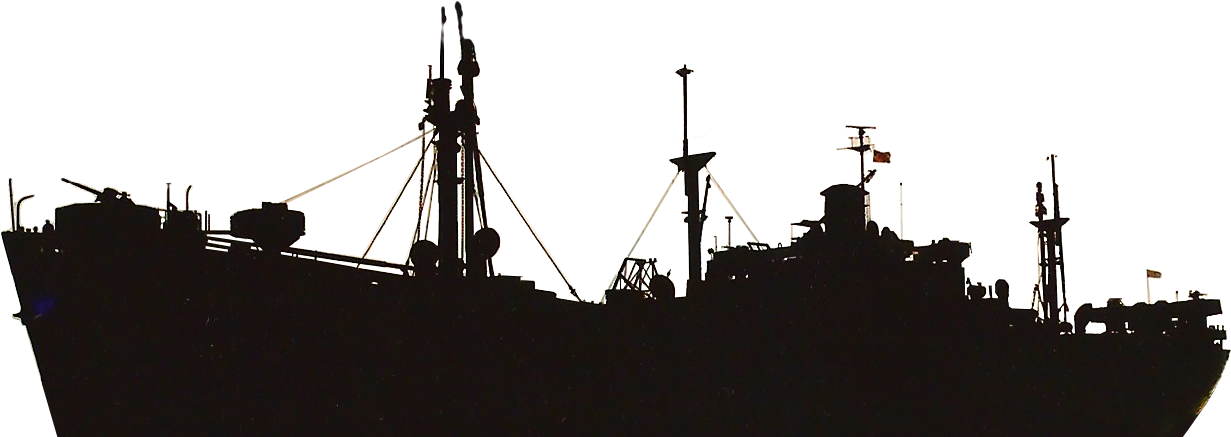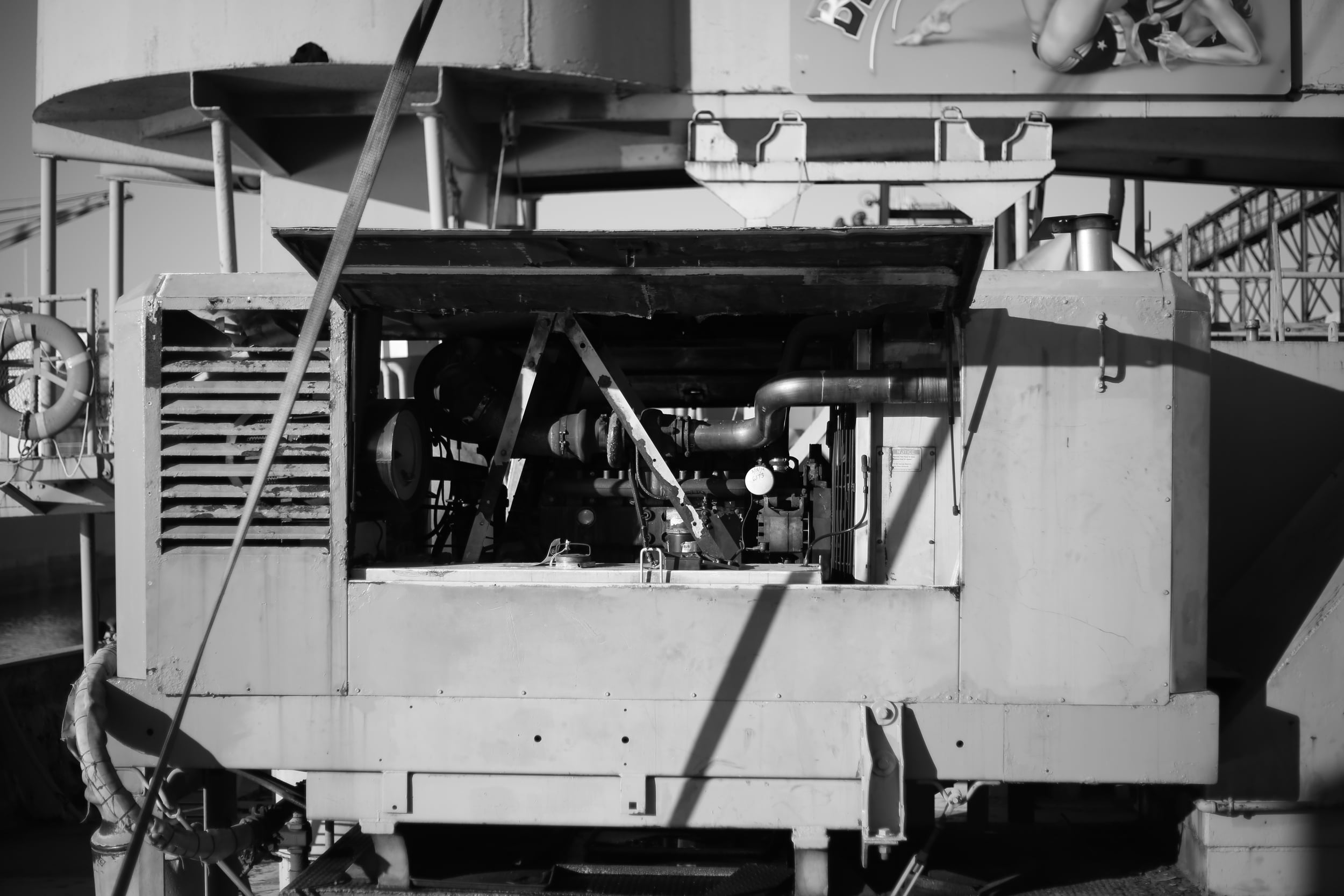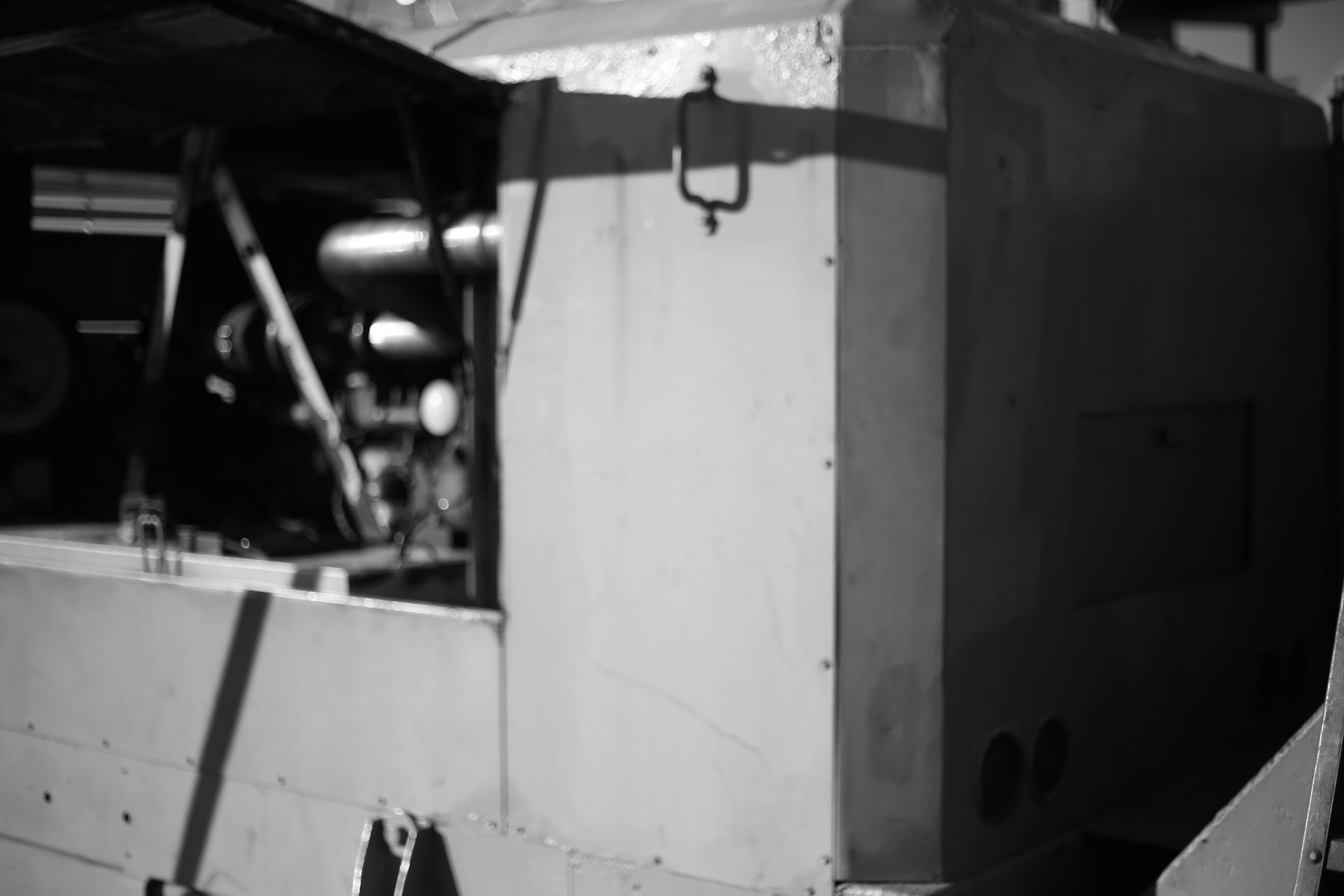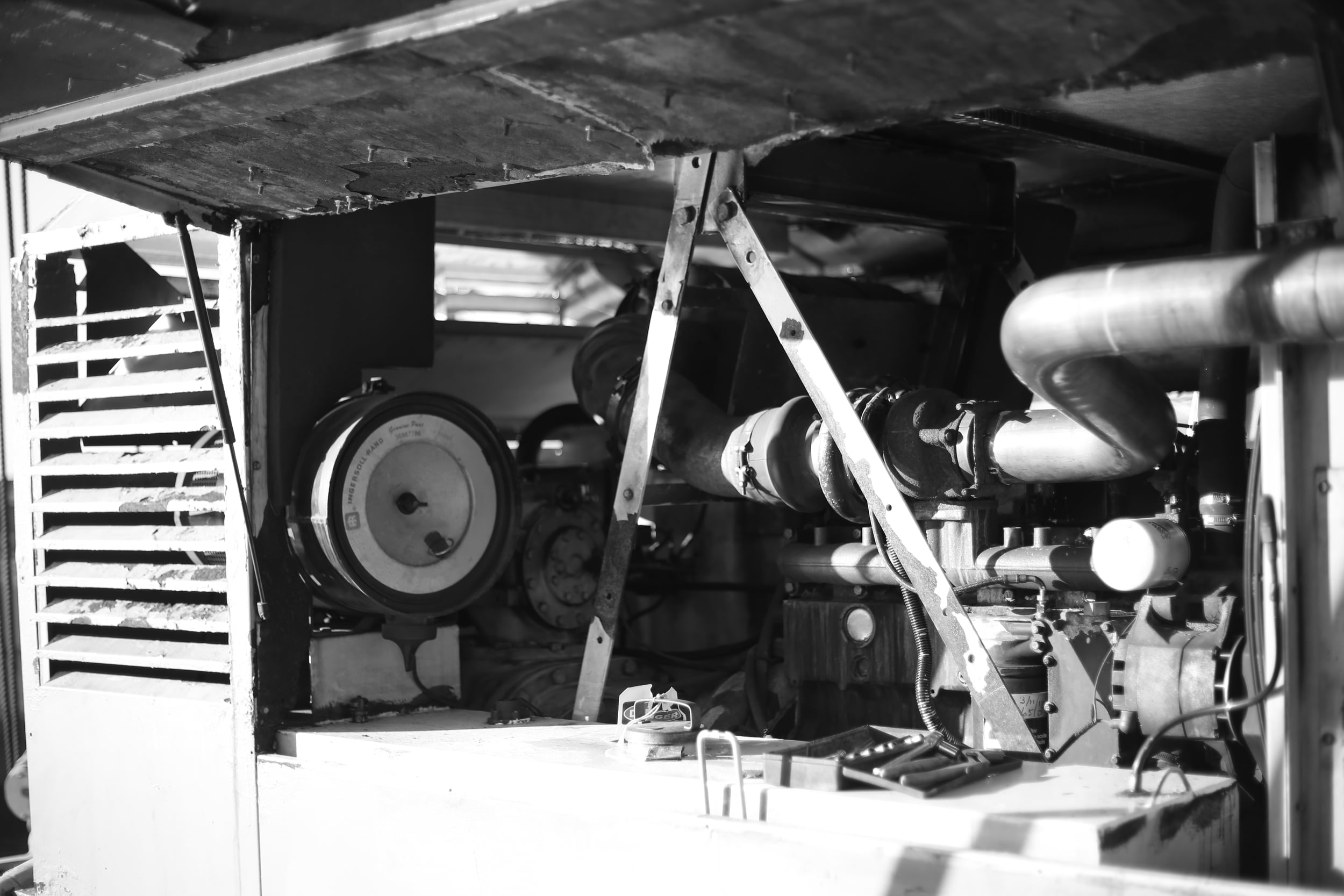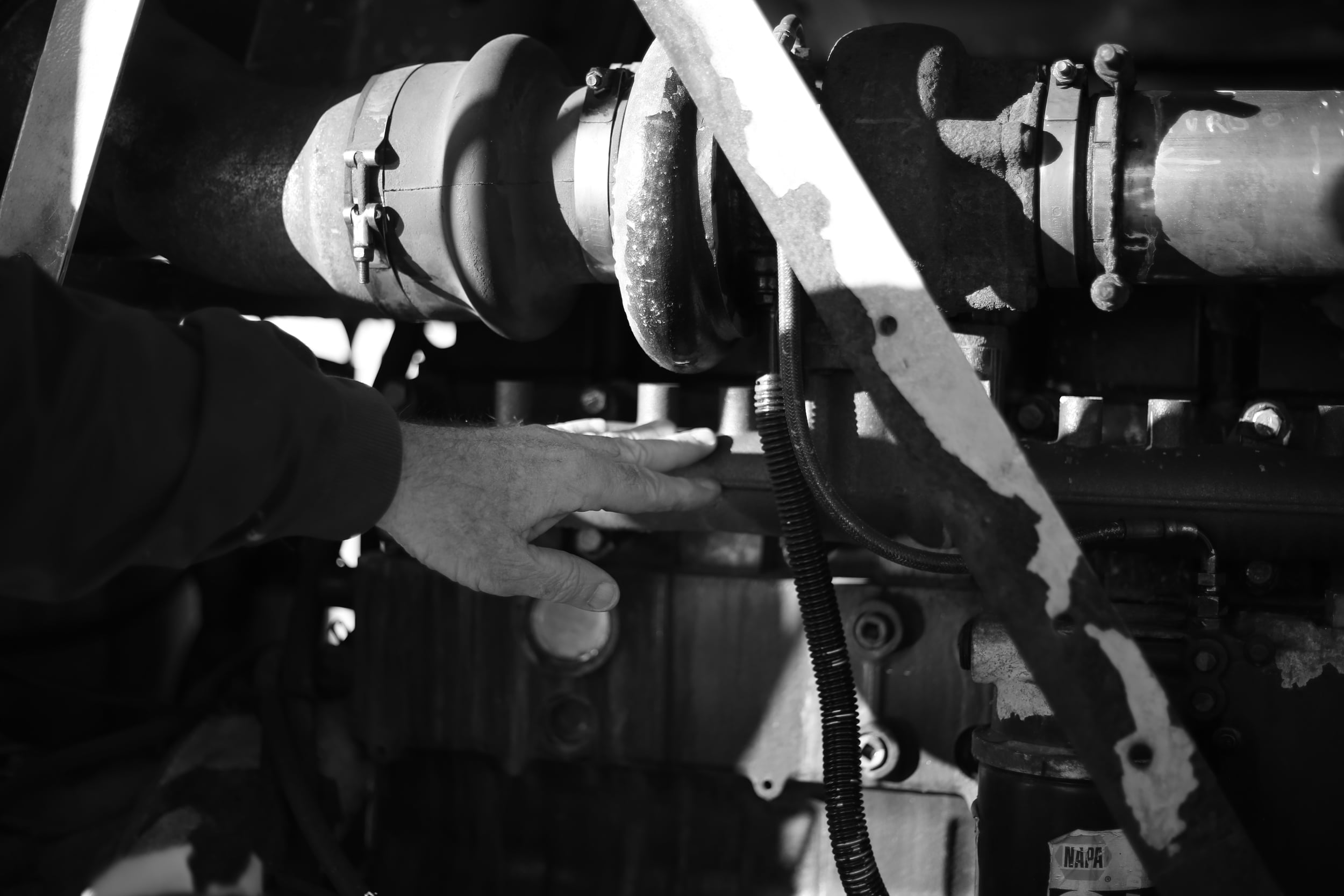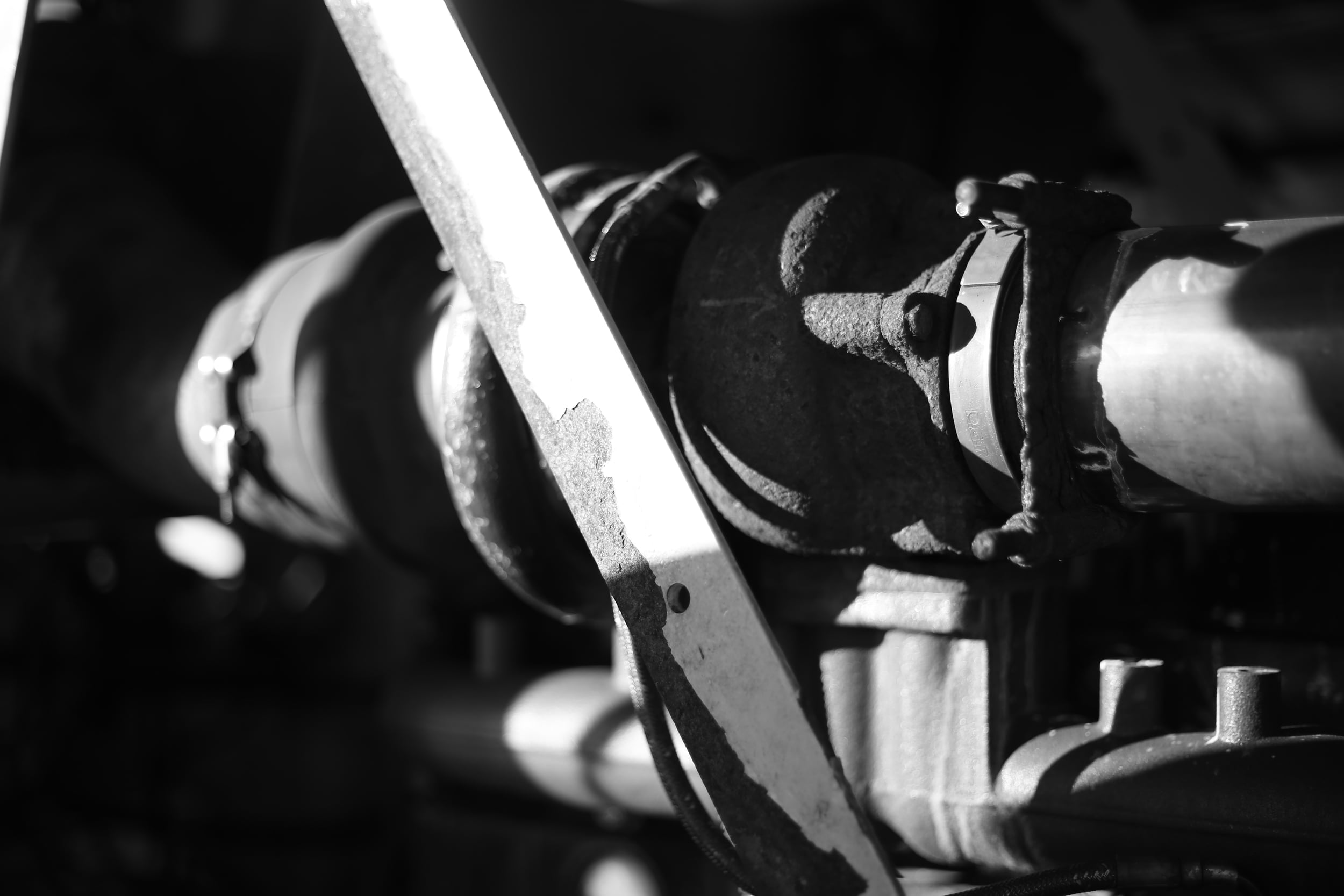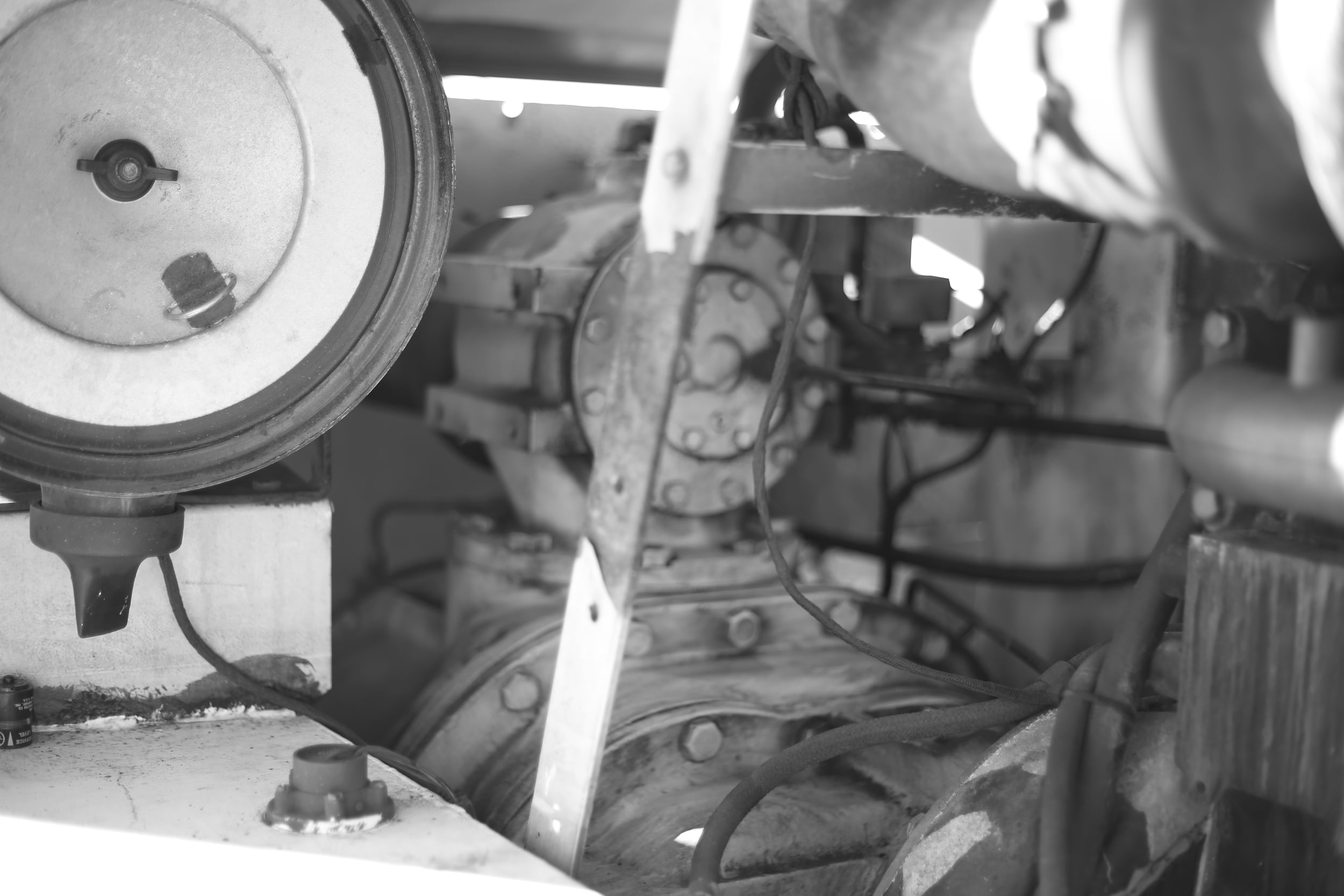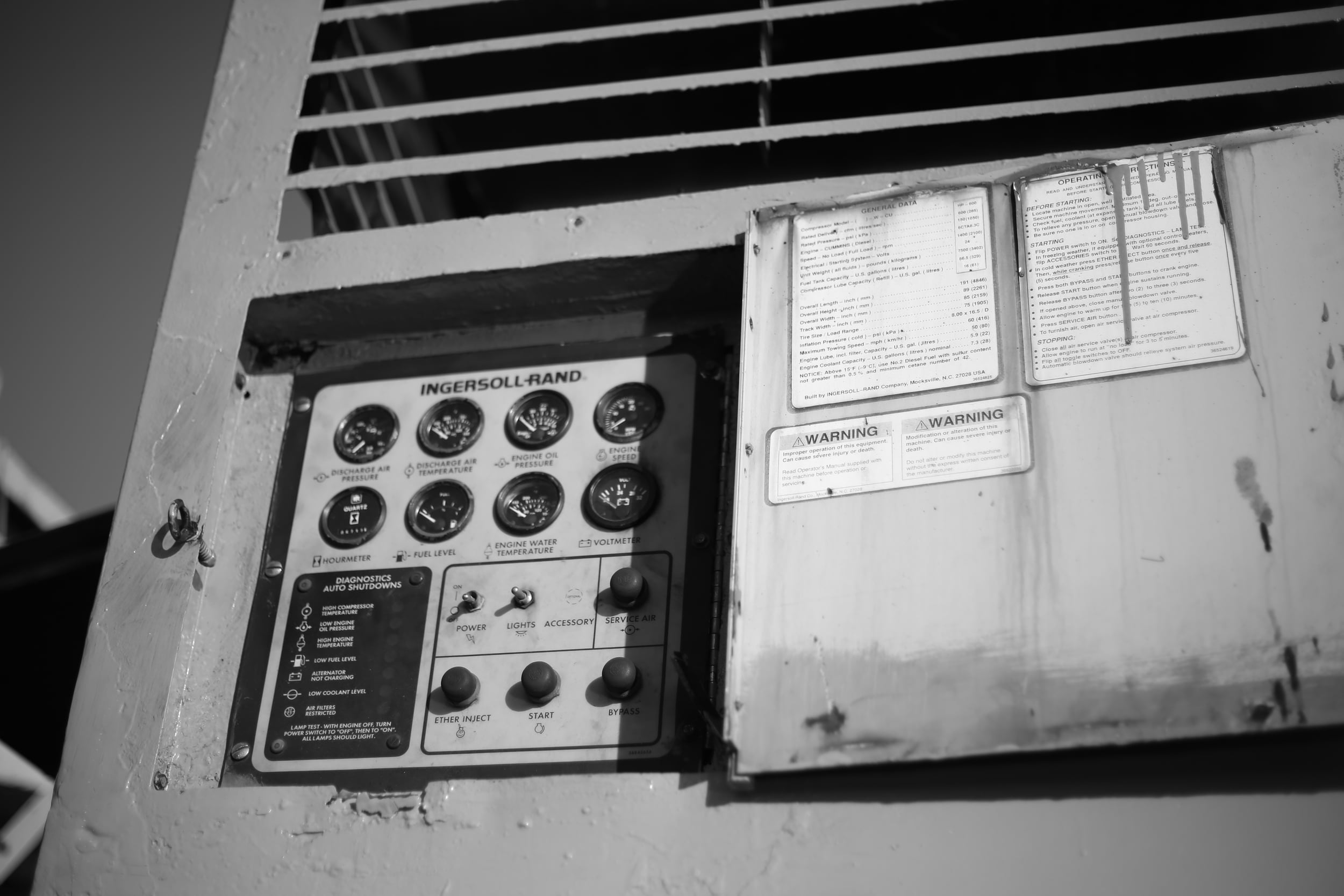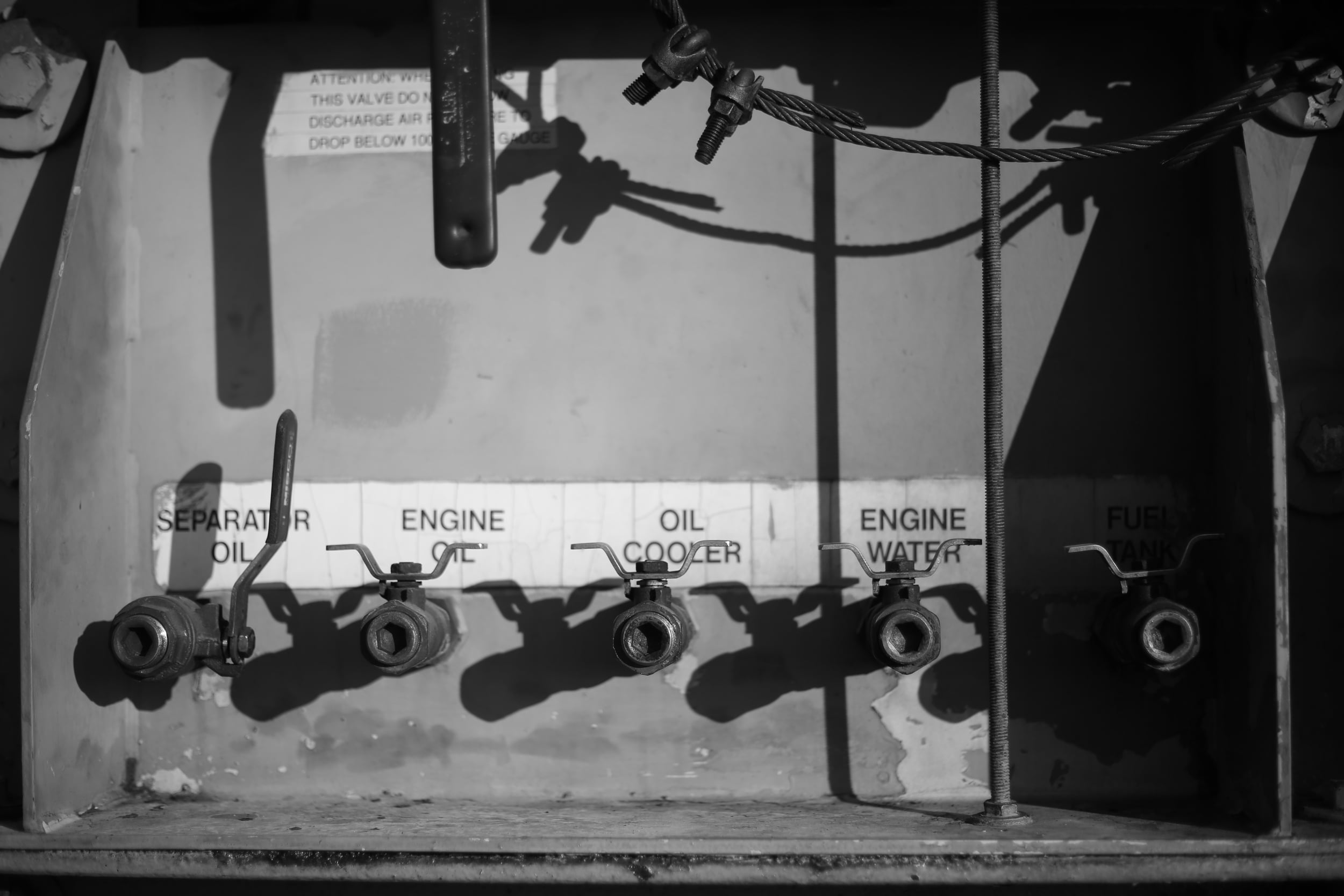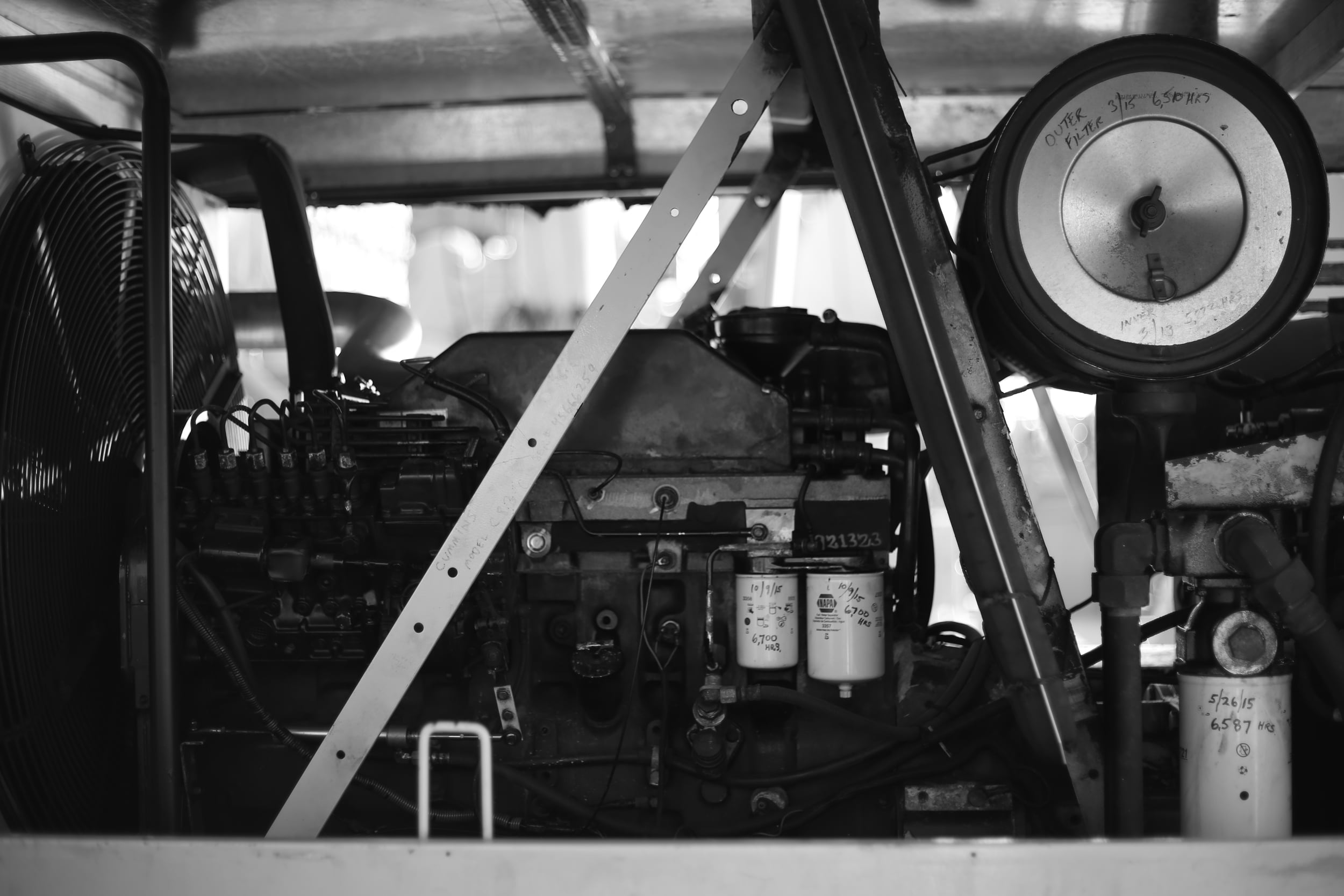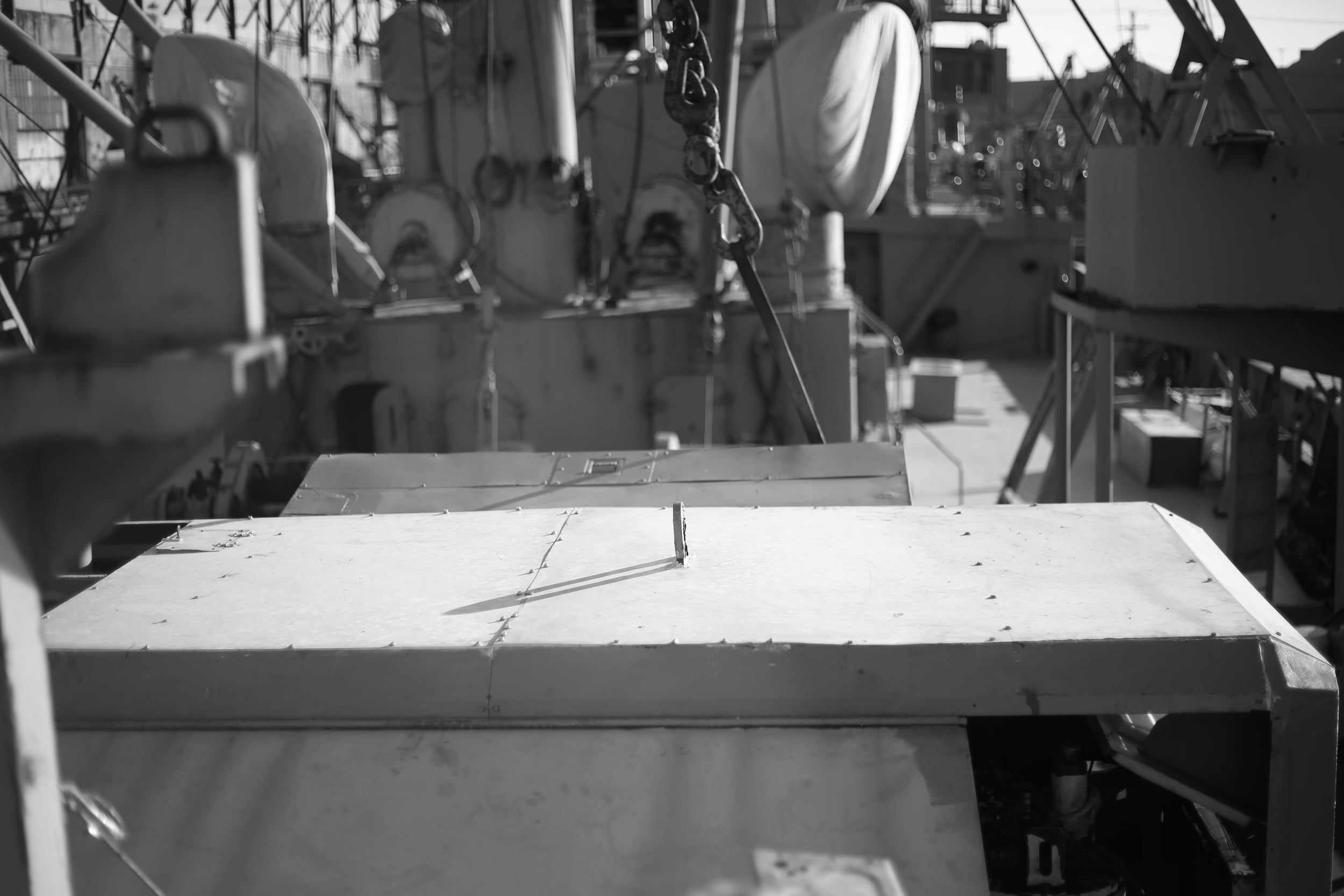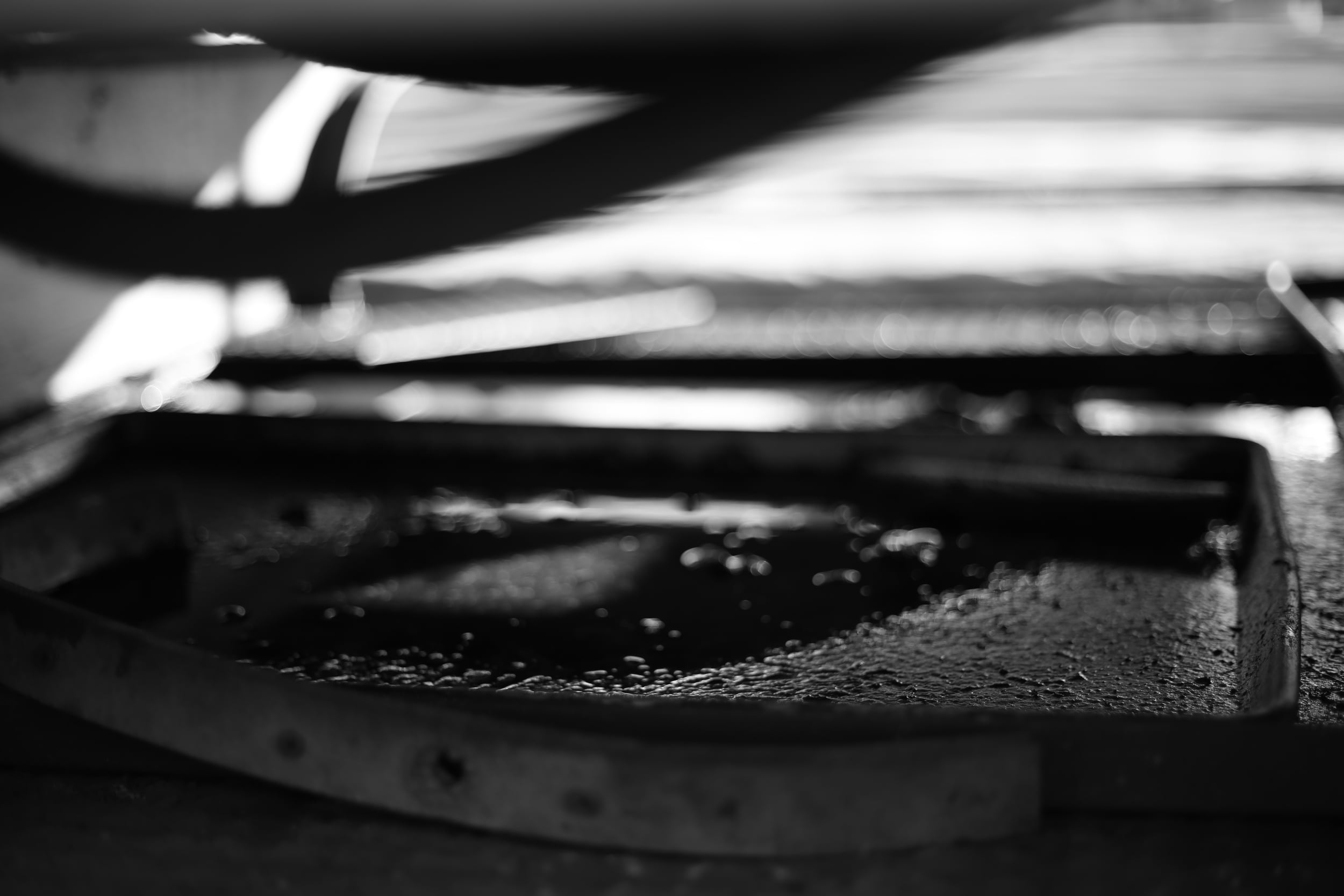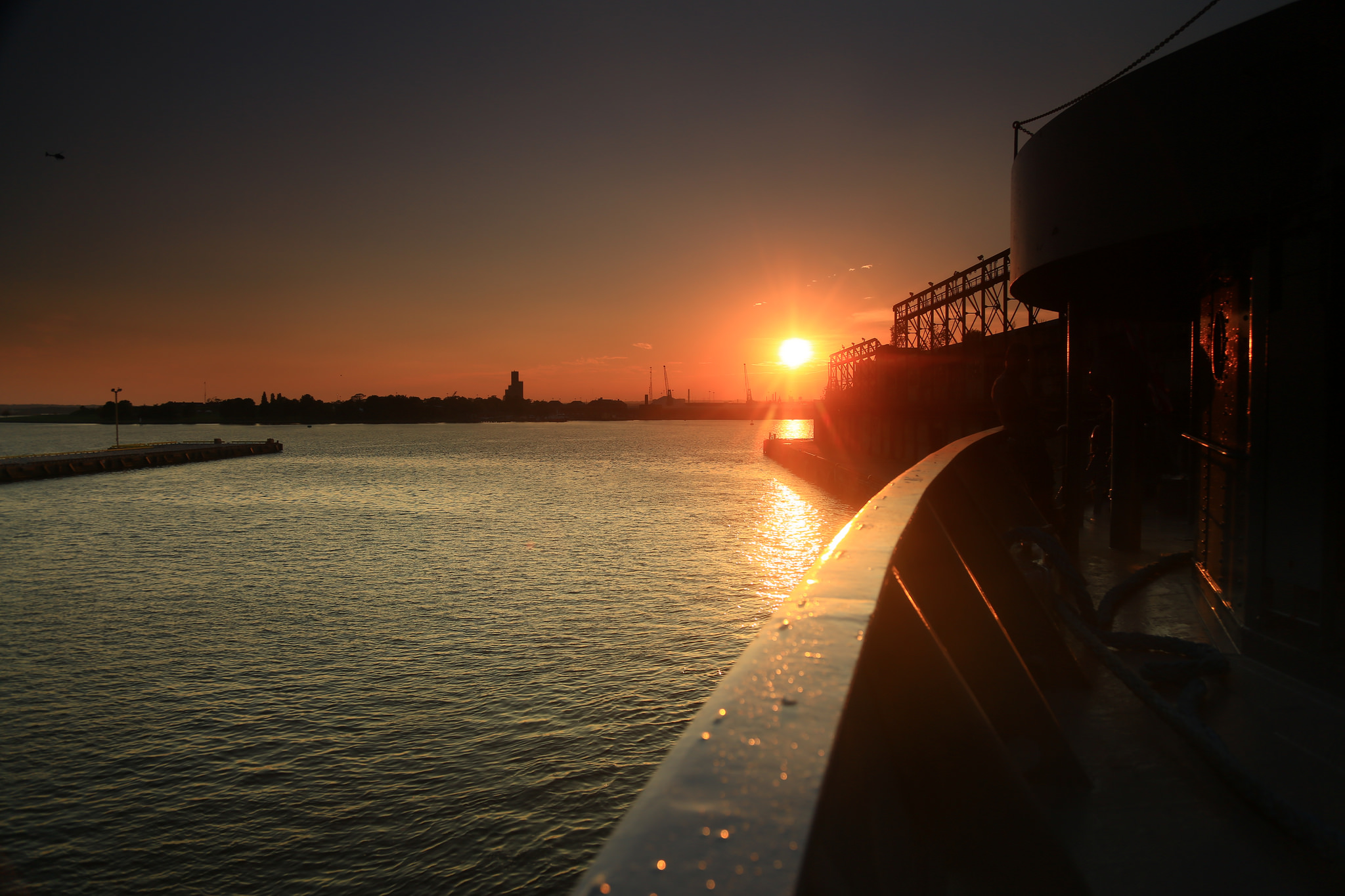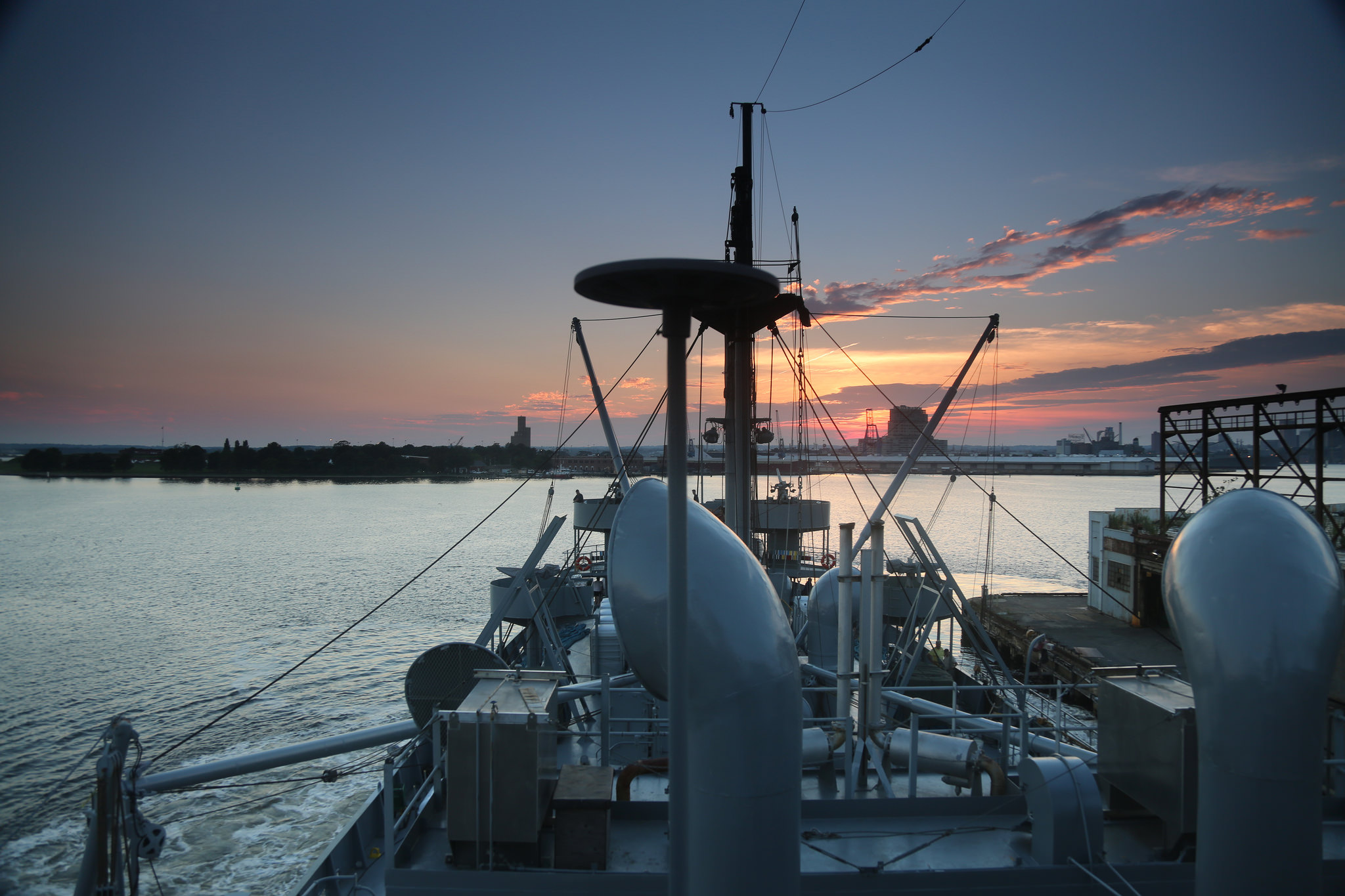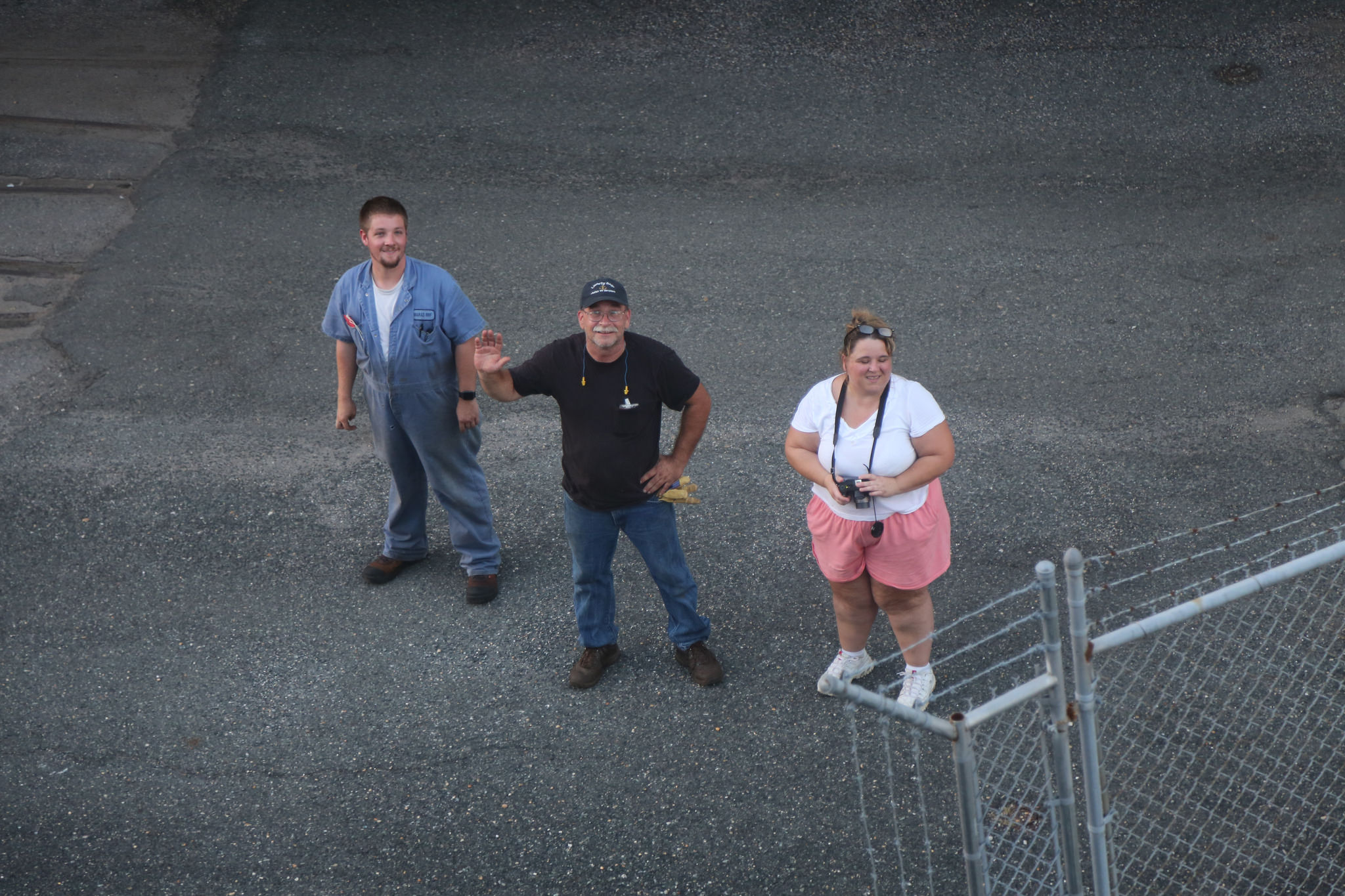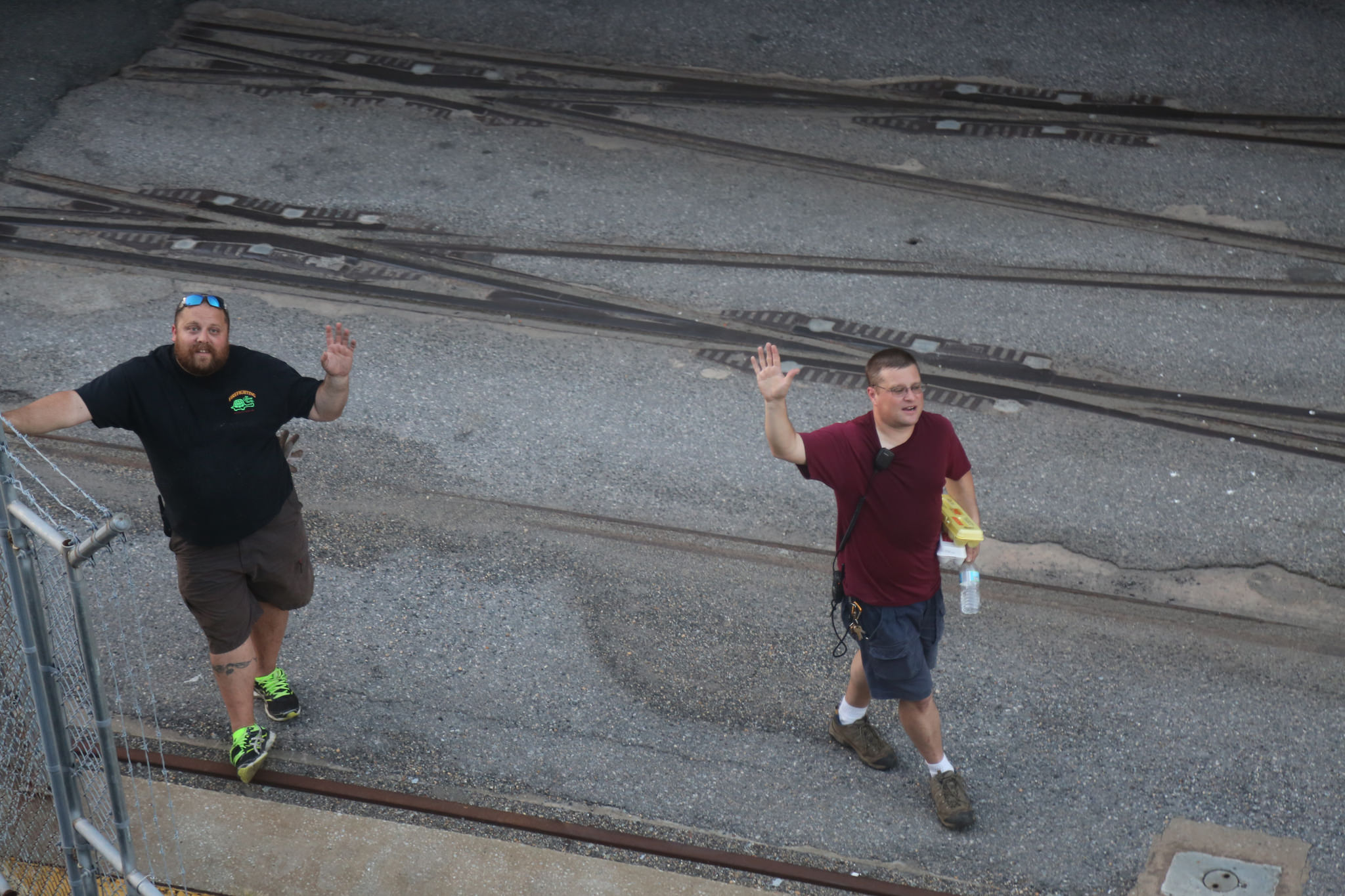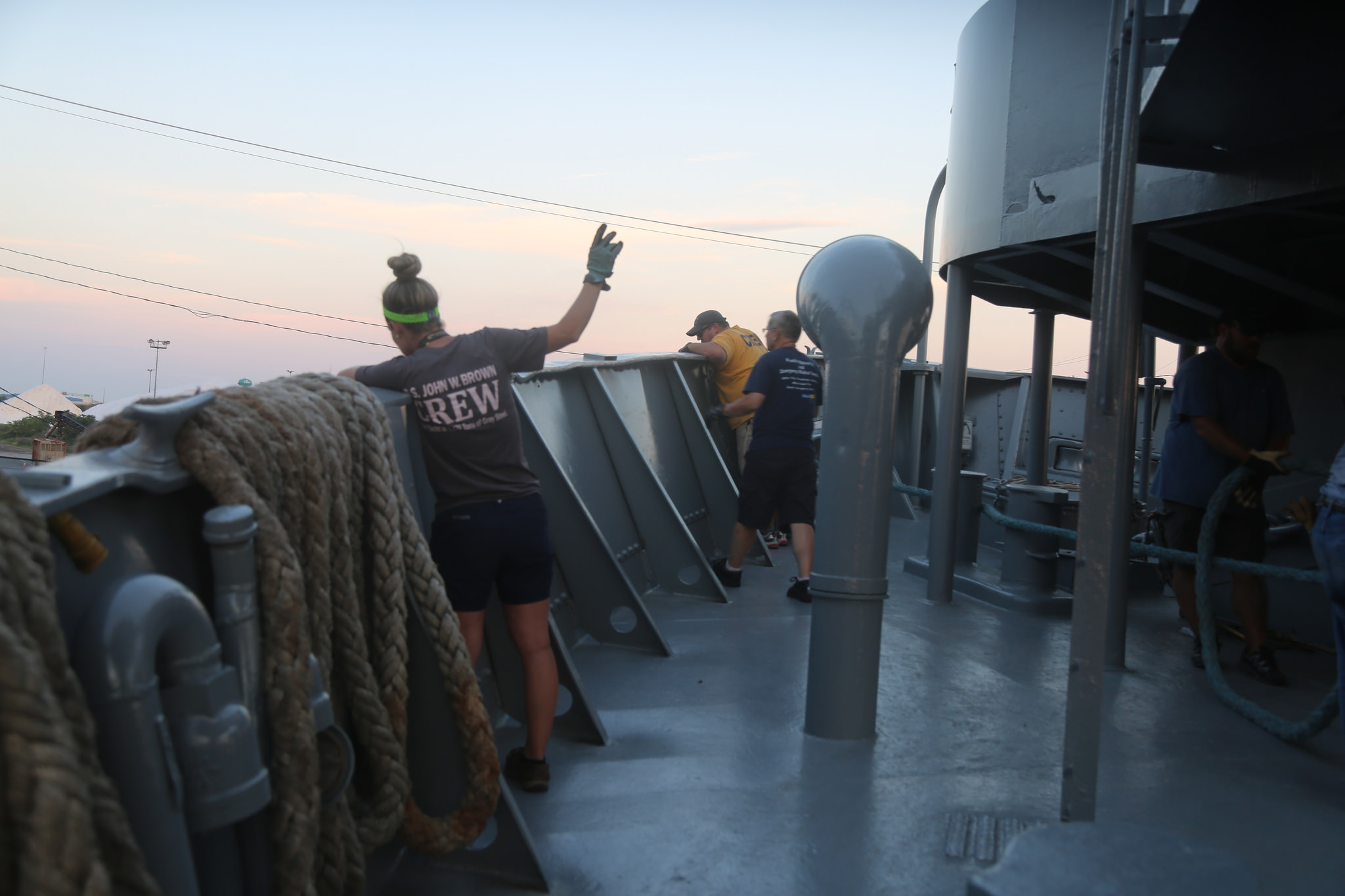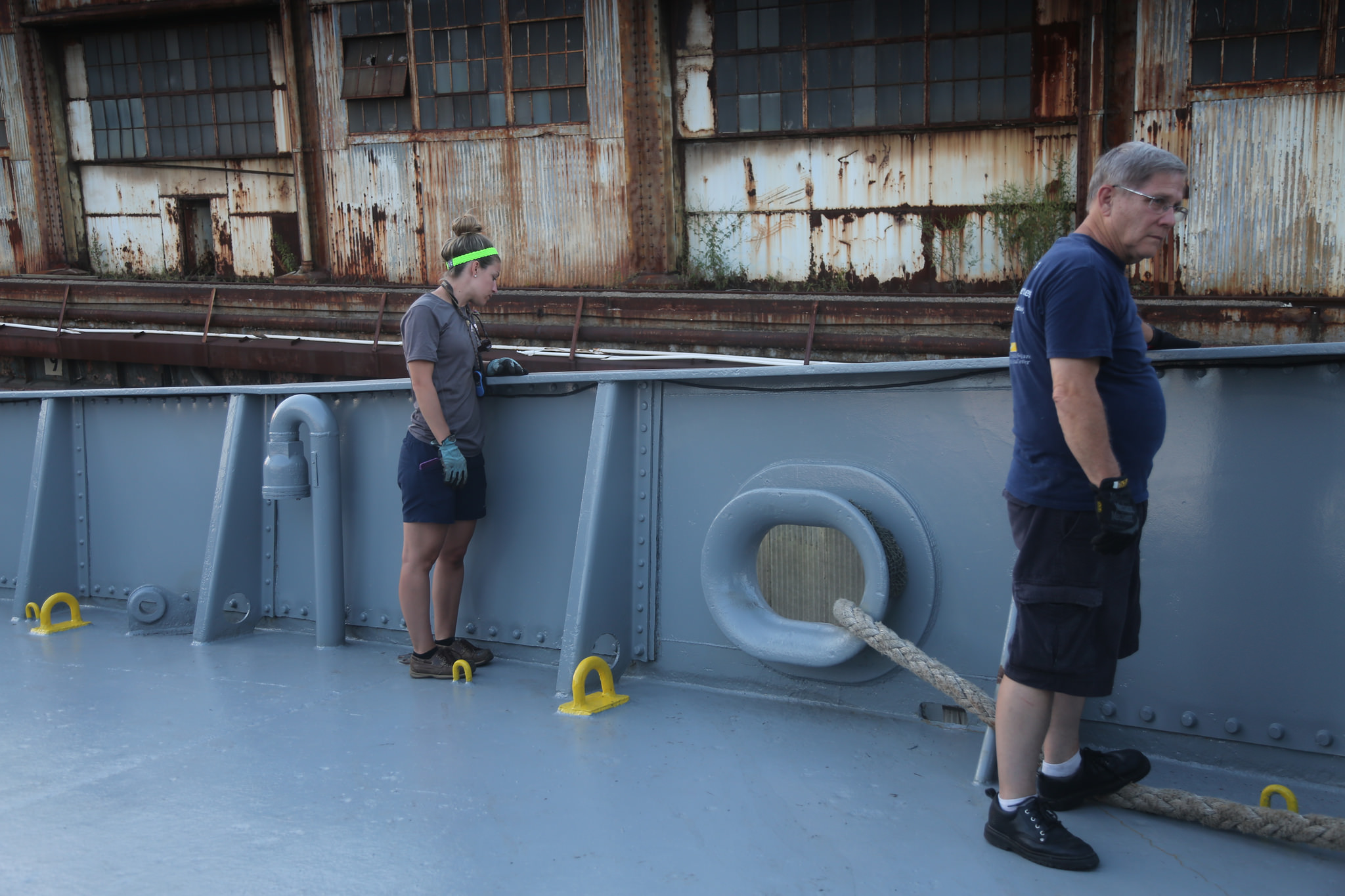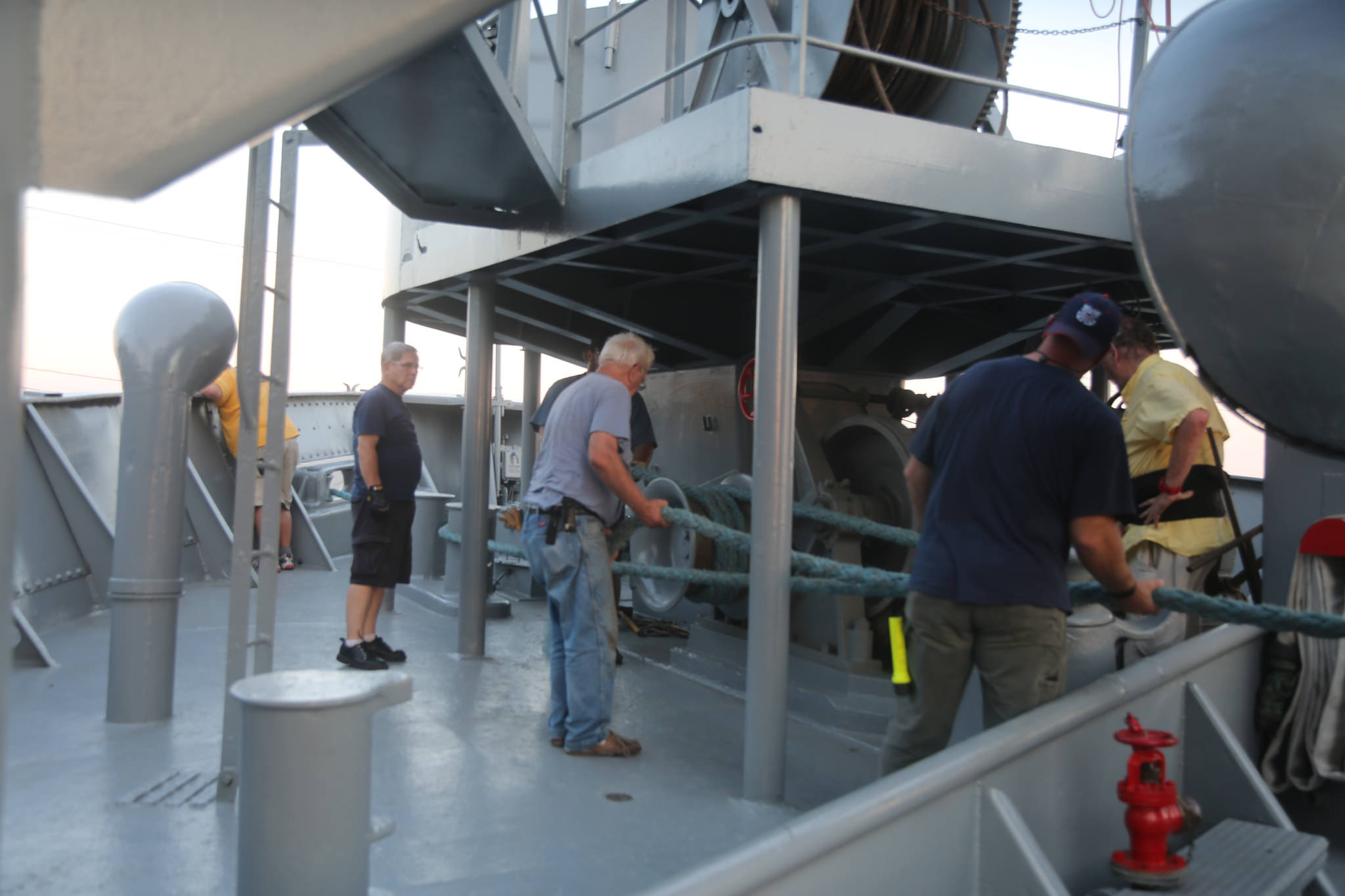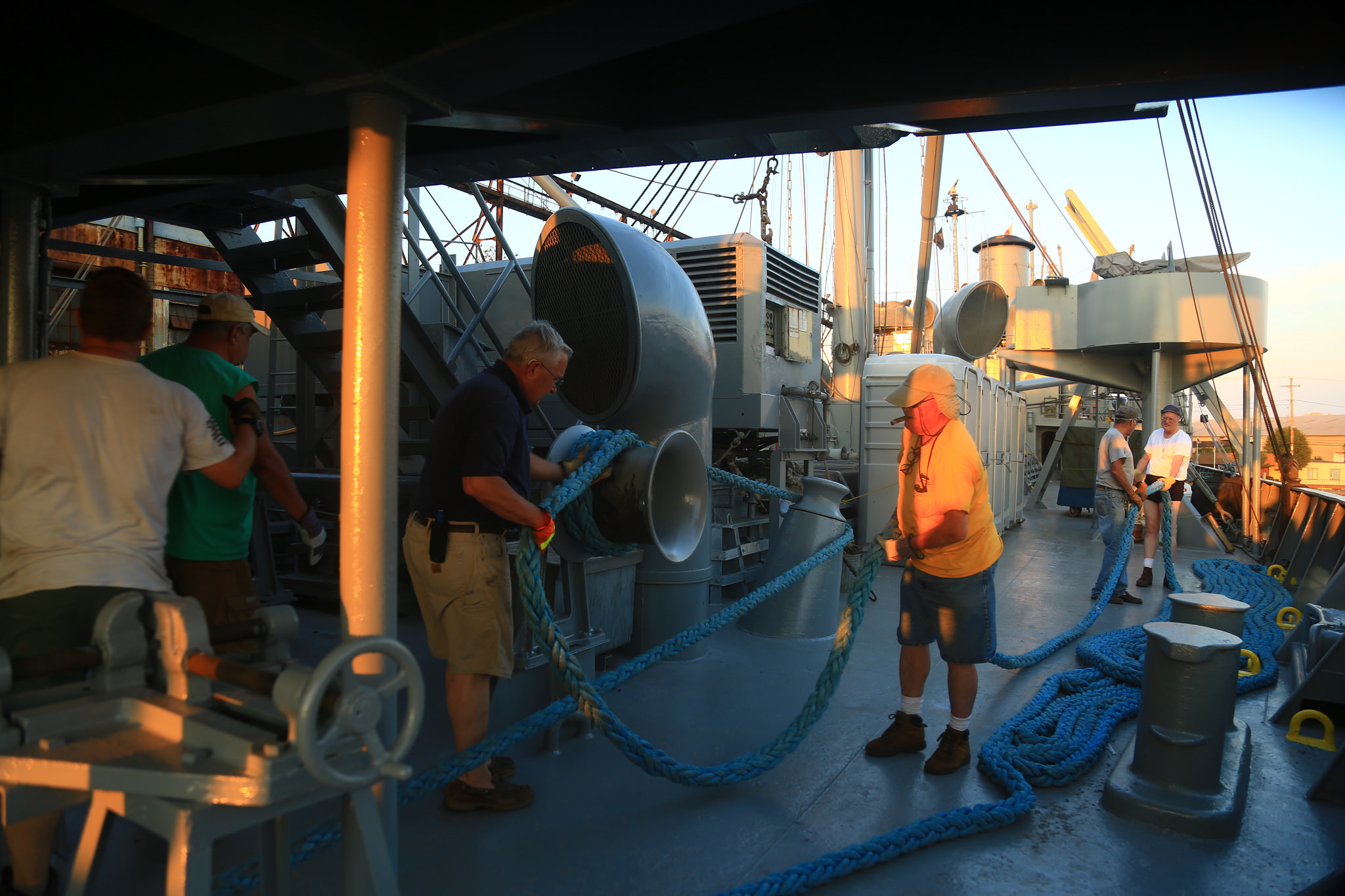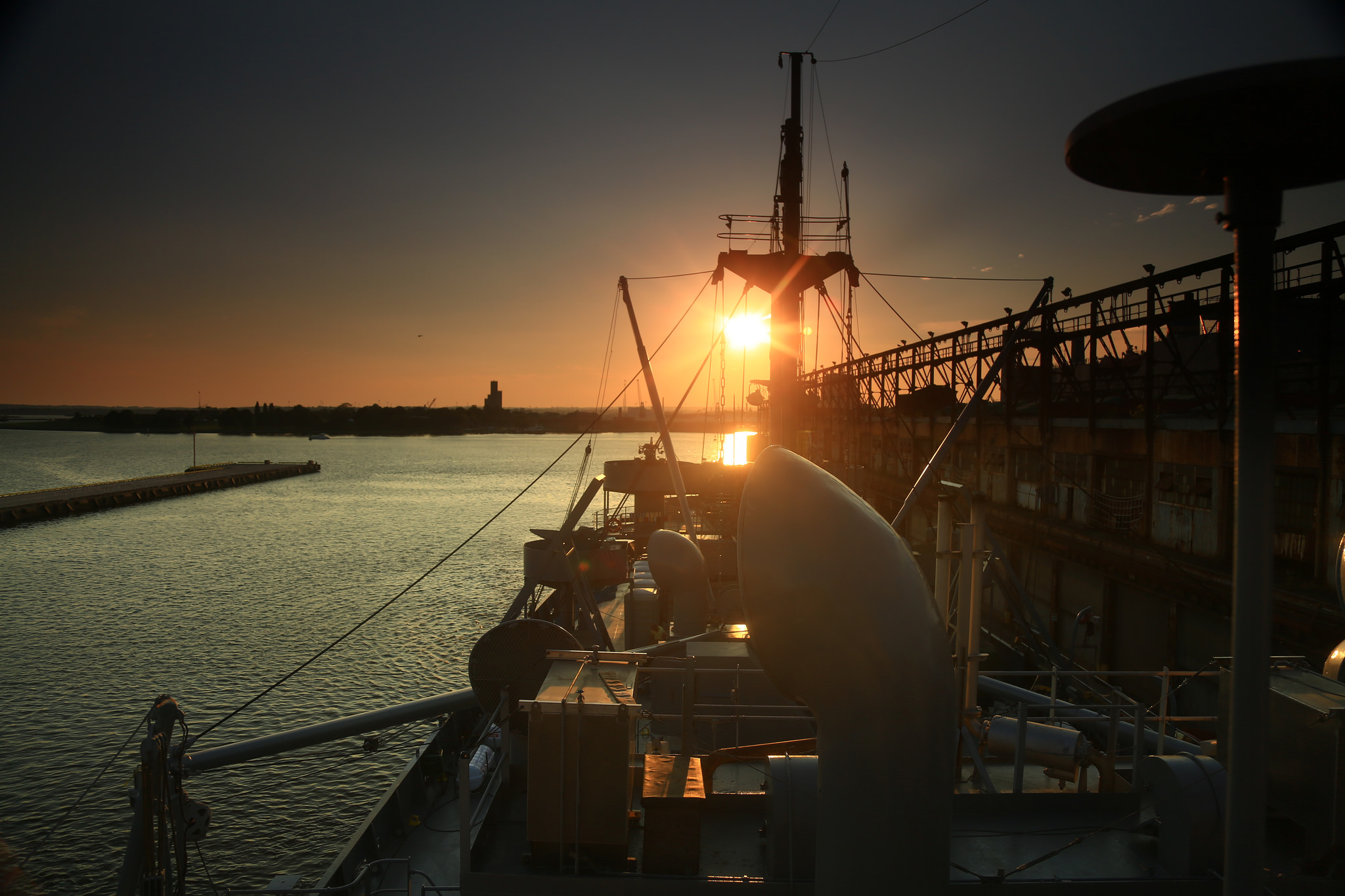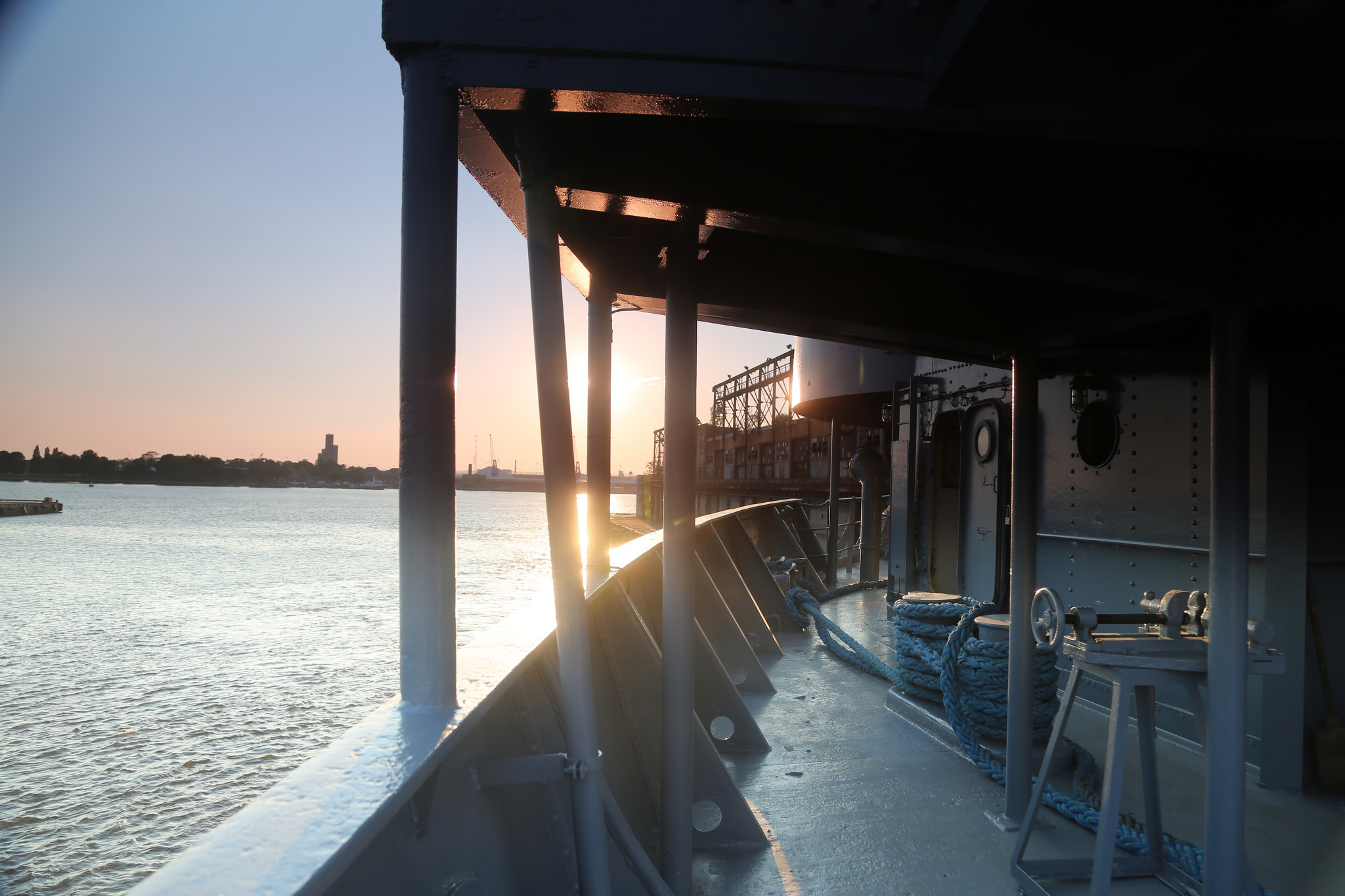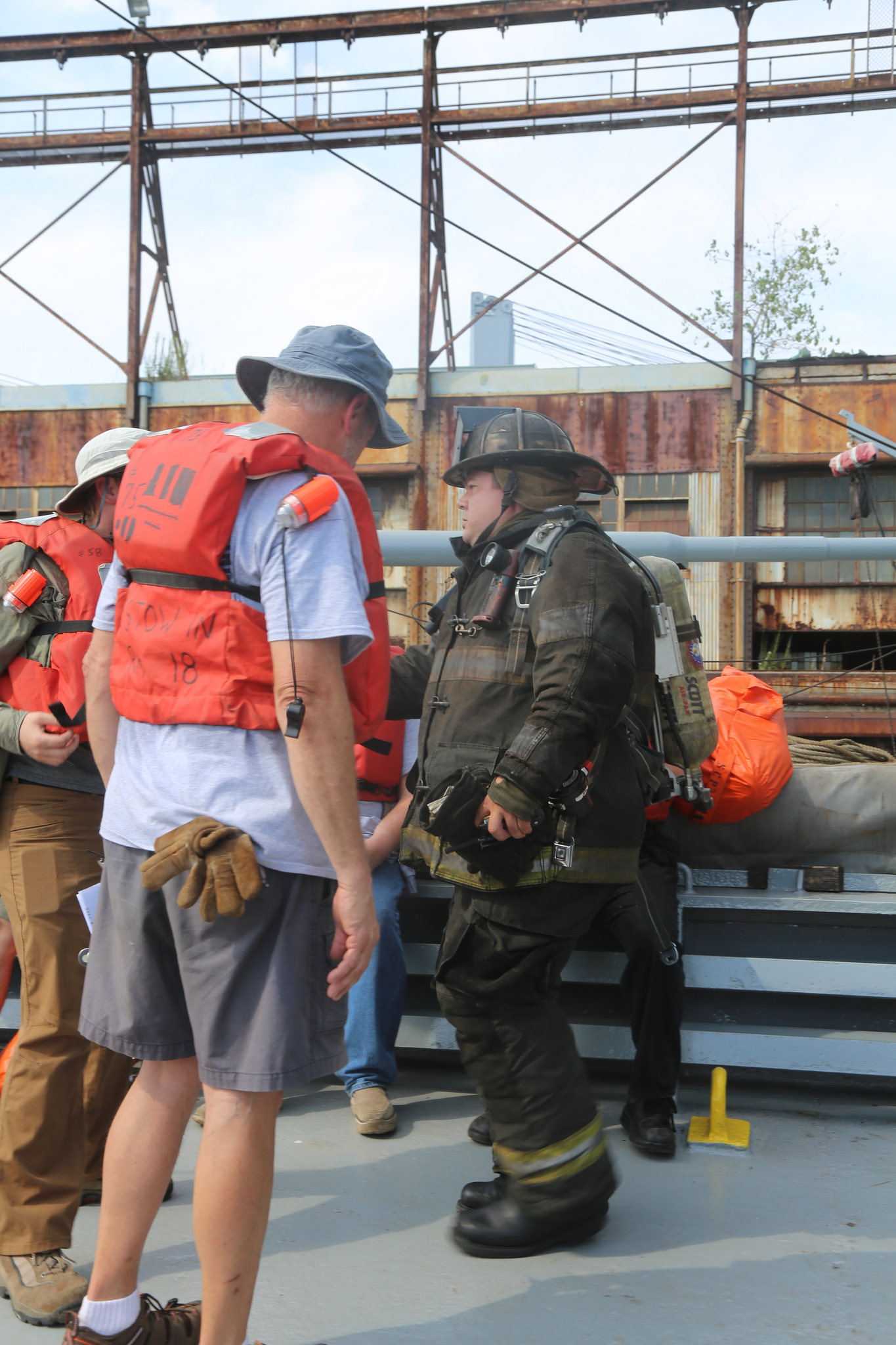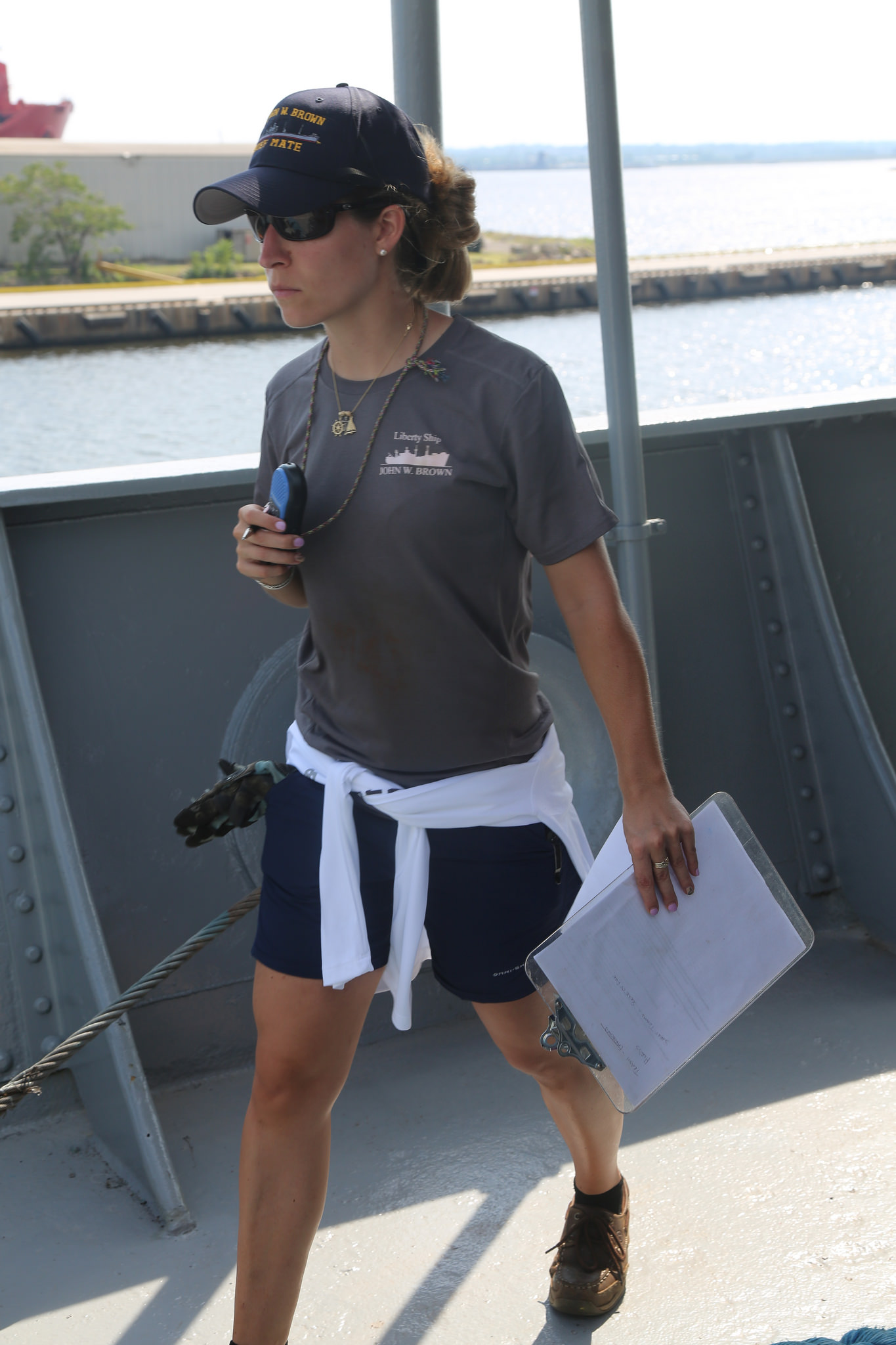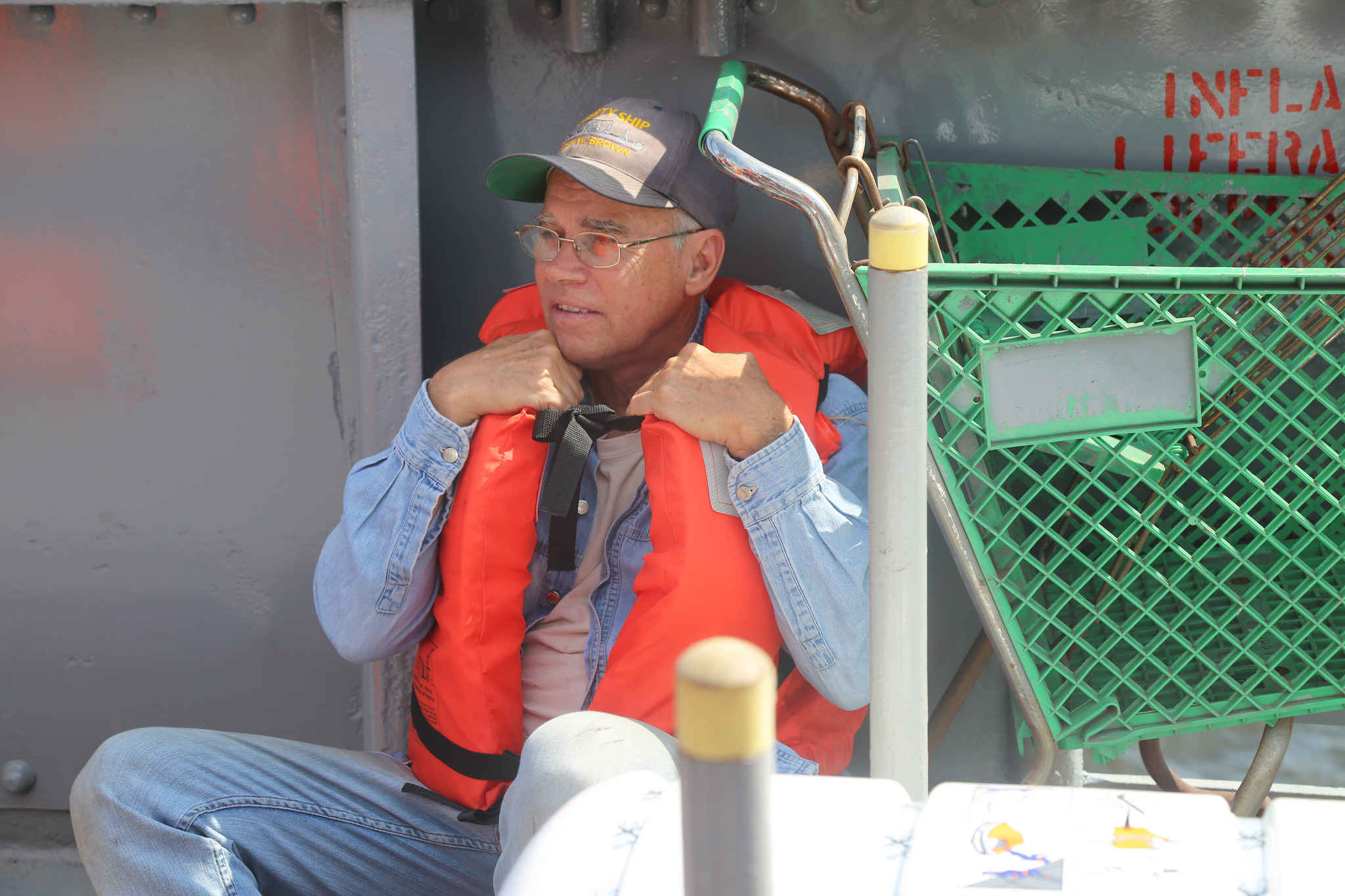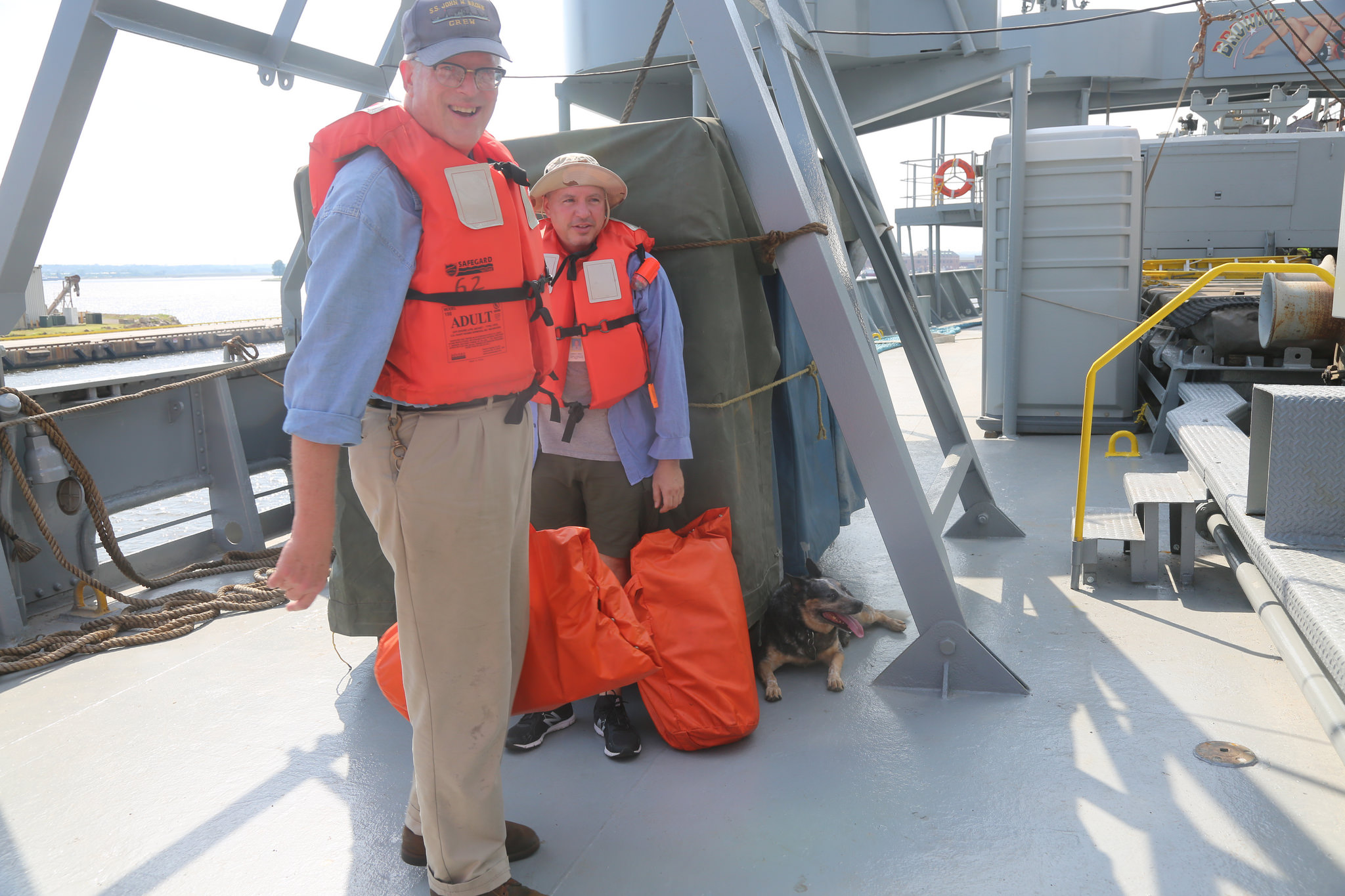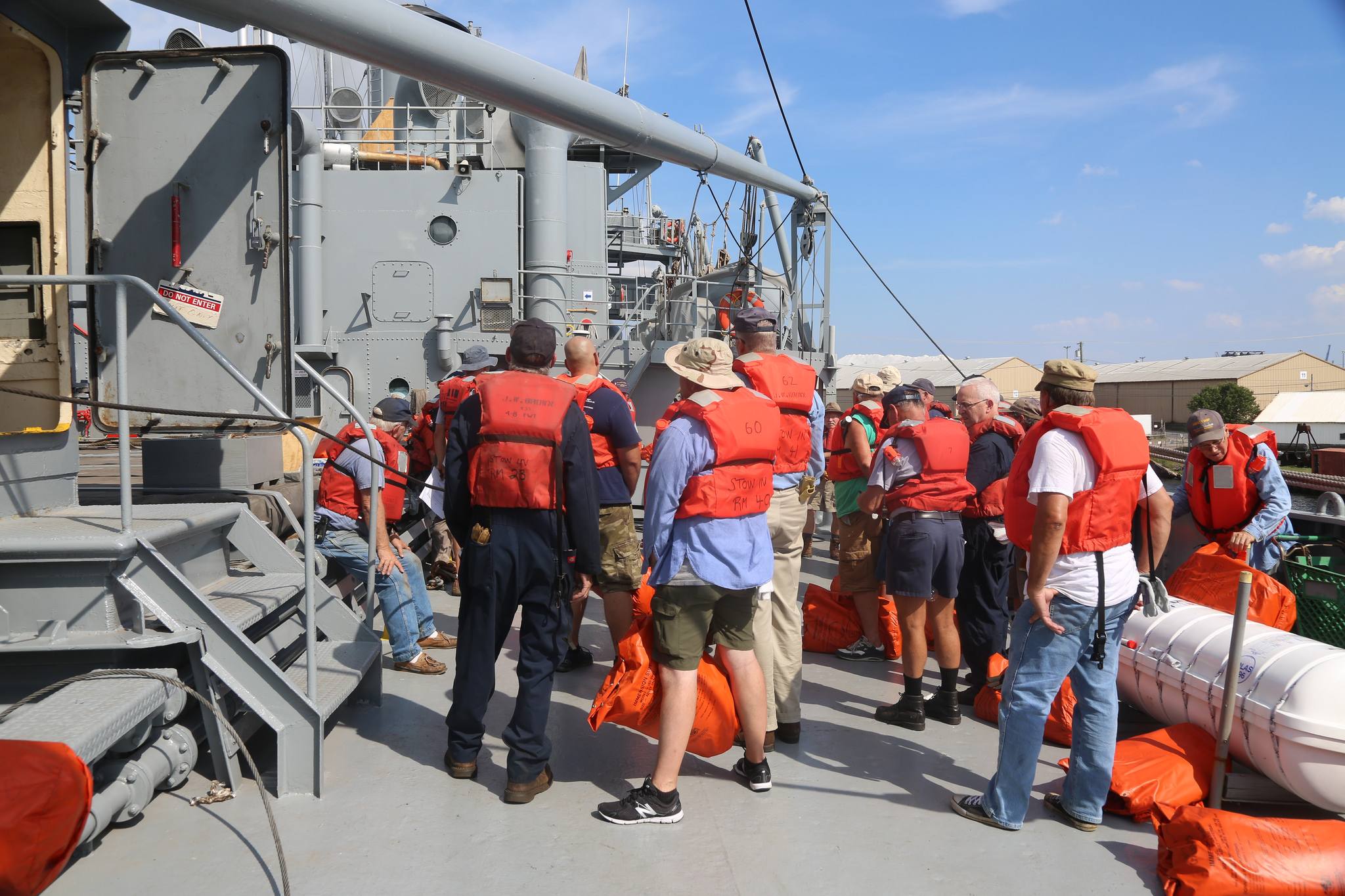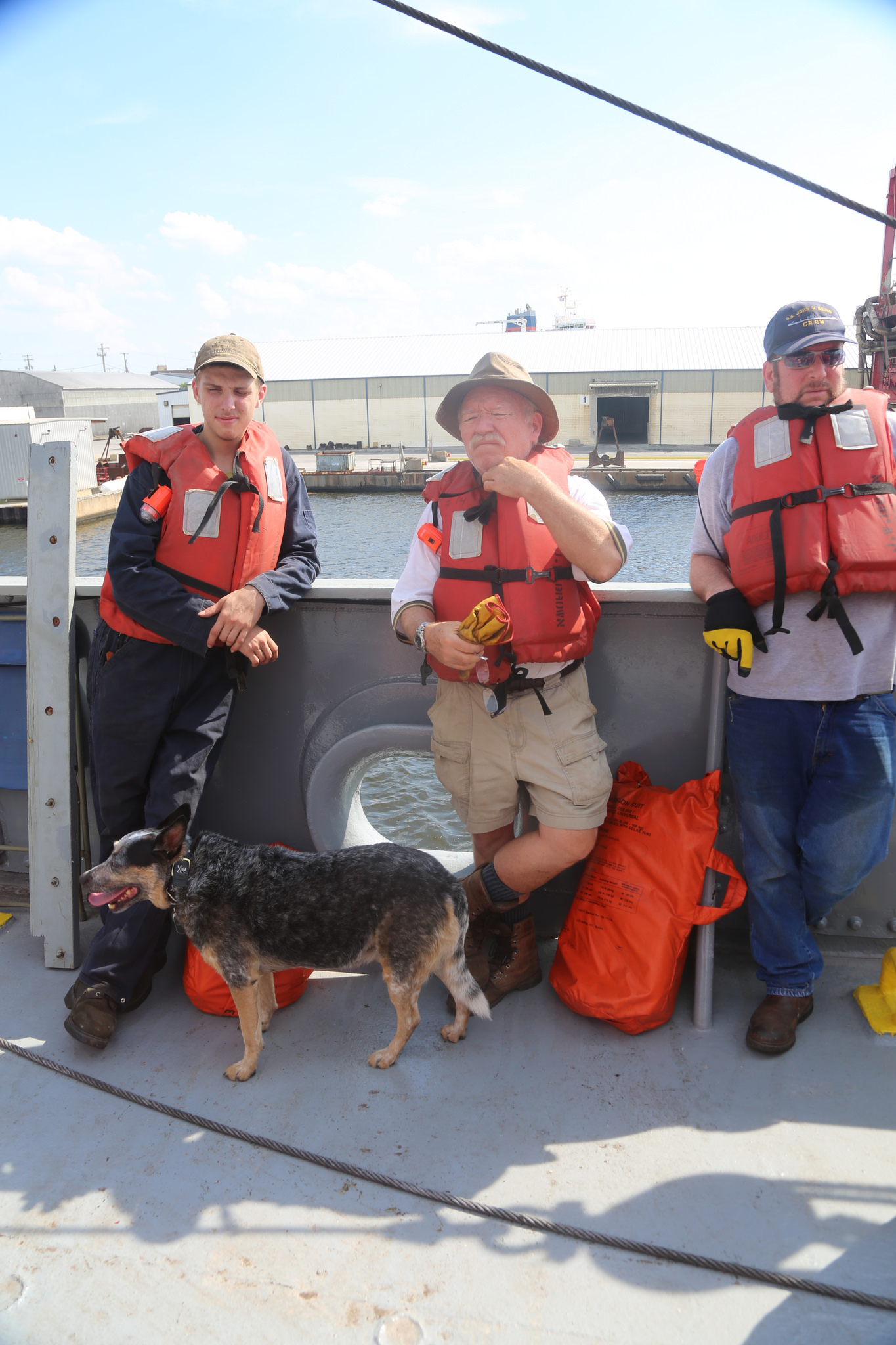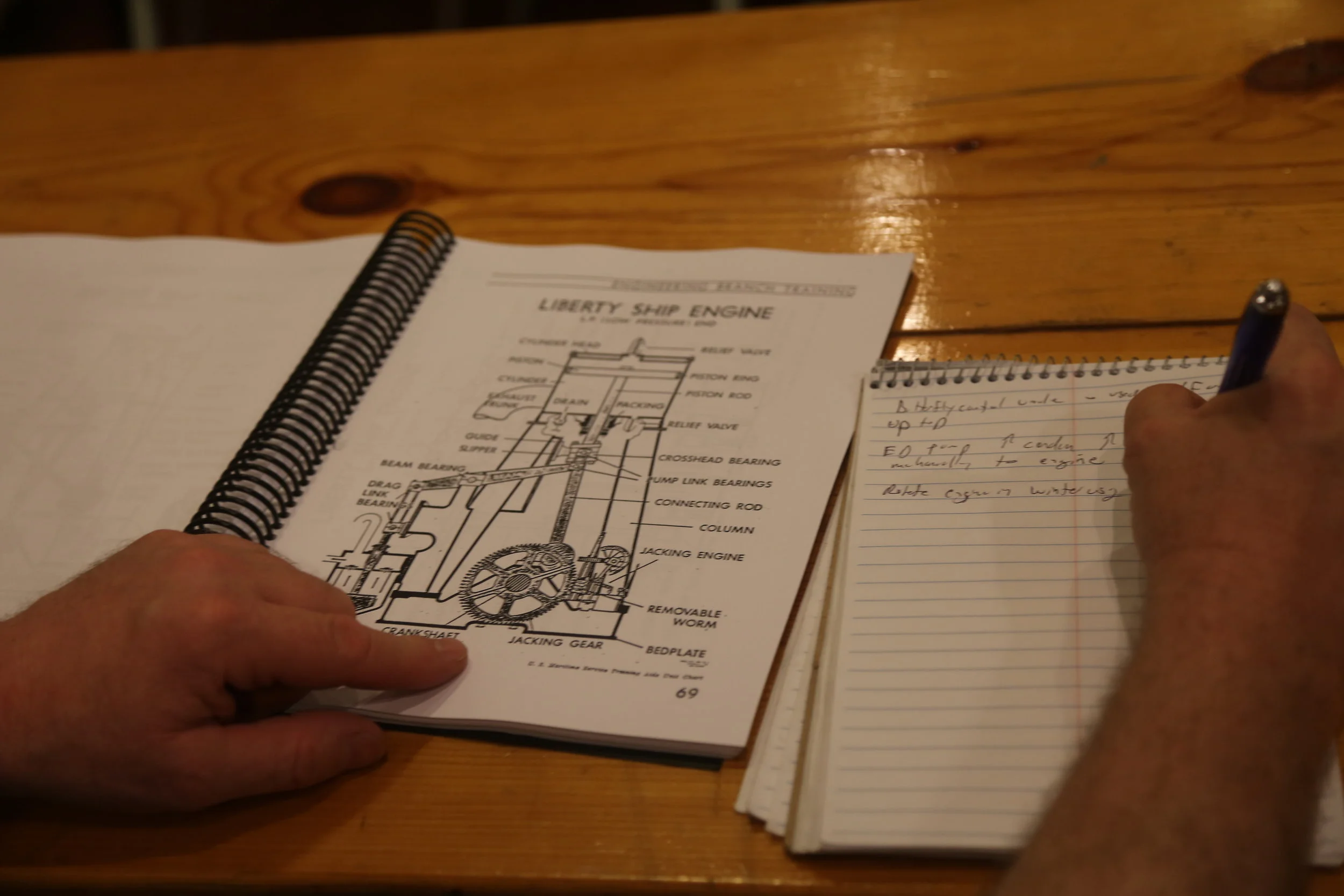We're going to start this weeks' blog off with a bad, bad pun. "Why did the compressor go to the doctors?" It had a soft knee. "What? Has the bad joke threshold been crossed?" "Anyone got any input or output on this?" OK, ok, enough of the pad puns that only those that understand compressors will get anyway.... So for the last few weeks (ok, maybe about 2 months {remember we only have 2 days a week to get work done}) work has been done by crew members on the big compressor. Let's start with some background information, first.
Joe is putting the side panel back on the compressor.
Liberty ships were steam powered, and that means everything onboard was powered by steam, not just the main engine. During WW II steam was kept up continuously as the ships were never shut down, and if they were, an outside source of steam was required to start up the ship. Since we now operate as a museum ship and only raise steam a few times a year, operating winches, pumps, chipping hammers and other equipment presents a problem. Enter the BIG air compressor.
Over 20 years ago a diesel powered air compressor was permanently installed on top of # 5 hatch to supply compressed air to ships pumps, cargo winches and any machinery that originally operated on steam. This allows us to operate the machinery necessary to light-off the boilers in order to get underway, or to just run selected pieces of machinery like the cargo winches to load stores, etc.
The BIG air compressor (as it's known) was designed by Ingersoll-Rand Corp.as a jobsite construction compressor and was mounted inside an enclosure on a trailer ( the tail lights are still on it ! ) suitable to be towed to a construction site. This of course was modified and it now supplies compressed air to the old deck steam line and on down to the engine room.
For 20+ yrs and 6,700 hours of operation it performed it's task without skipping a beat with only routine maintenance like oil changes. As with an old car, it eventually began to complain; anti-freeze leaks, loss of power, and rusting of the enclosure and fuel tank began to cry out for some major work. The highly skilled volunteer engine dept. attacked these issues head on, starting with a remanufactured engine head for the Cummins diesel obtained from a tractor-trailer truck parts supply Co. in Baltimore. Work continued with compressor end work, sheetmetal repair/replacement on the enclosure and repiping of the fuel supply. The 150 psi (pounds per square inch) air pressure hose connecting the compressor to the ship is next to be replaced, and hopefully we will get many more years of service out of this machine, which is essential to our vision as a steaming, operational, part of history.
Here are some pictures taken about a week ago to give you a better view of some of the things that were done. The top was pretty rusted out (20 years will do that to the best of us!) so you can see the replacement in one of the shots. By giving you this info, you can see some more in depth views of the types of things that are occurring on the BROWN on any given work day (Wednesdays and Saturdays). Some projects are big, and some are small. This one happened to take a few weeks to complete. Also note, we DO have an electric air compressor which is known as the 'little' or 'small air compressor' which is not powerful enough to run the machinery needed to light-off the boilers and get underway, so it doesn't get the respect that the BIG air compressor gets.
A huge shout-out to Joe for showing what was done and then writing it up so this blog writer would not sound uneducated. Can't have THAT happen. And thanks to those of you who follow our antics and adventures on the JOHN W BROWN and read our blog each week. See you next week!
Project Liberty Ship, Inc is a 501(c)3 non-profit, all volunteer organization engaged in the preservation and operation of the historic ship JOHN W. BROWN as a living memorial museum. Gifts to Project Liberty Ship are tax deductible.
